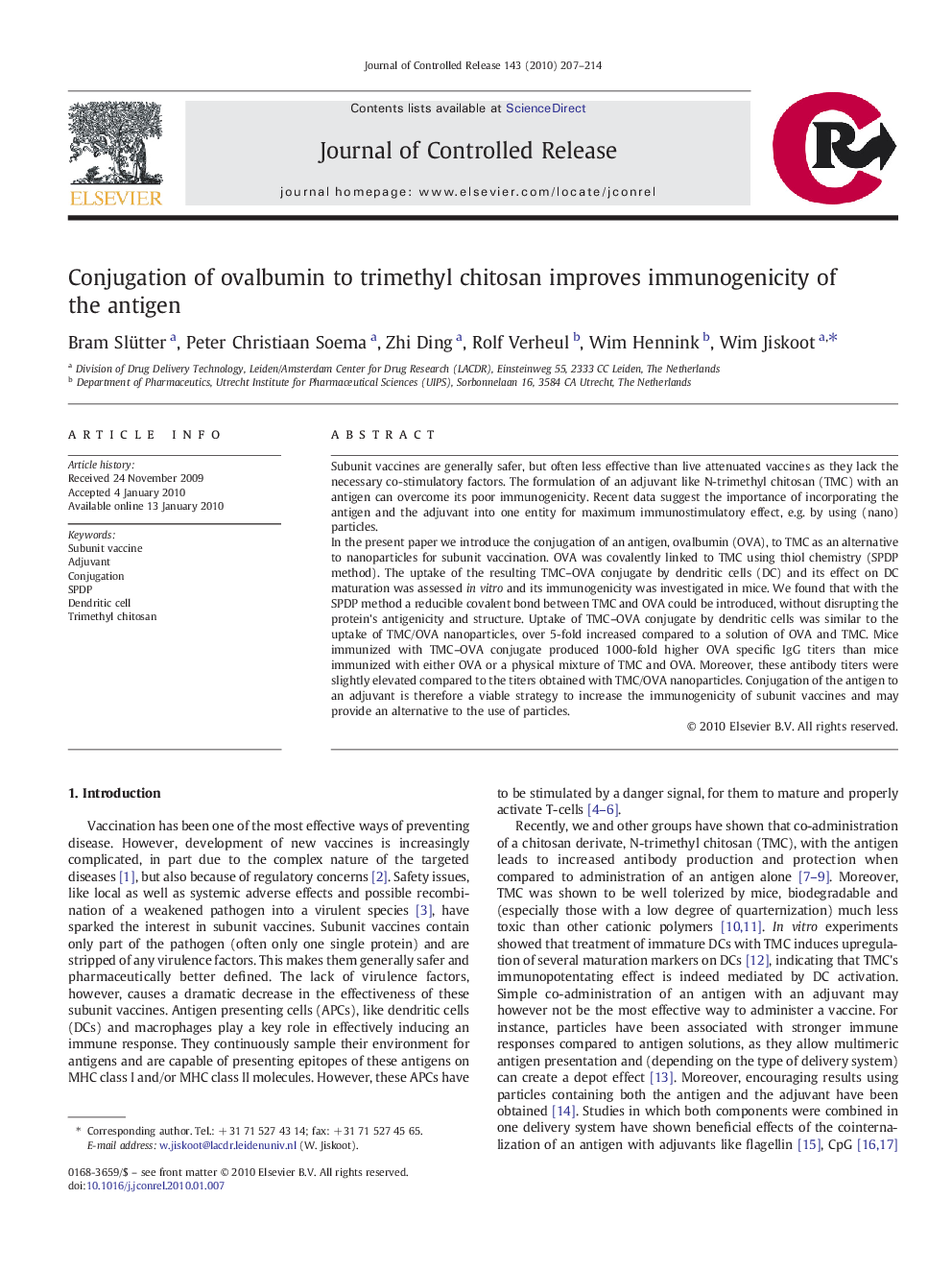| کد مقاله | کد نشریه | سال انتشار | مقاله انگلیسی | نسخه تمام متن |
|---|---|---|---|---|
| 1425749 | 986778 | 2010 | 8 صفحه PDF | دانلود رایگان |

Subunit vaccines are generally safer, but often less effective than live attenuated vaccines as they lack the necessary co-stimulatory factors. The formulation of an adjuvant like N-trimethyl chitosan (TMC) with an antigen can overcome its poor immunogenicity. Recent data suggest the importance of incorporating the antigen and the adjuvant into one entity for maximum immunostimulatory effect, e.g. by using (nano)particles.In the present paper we introduce the conjugation of an antigen, ovalbumin (OVA), to TMC as an alternative to nanoparticles for subunit vaccination. OVA was covalently linked to TMC using thiol chemistry (SPDP method). The uptake of the resulting TMC–OVA conjugate by dendritic cells (DC) and its effect on DC maturation was assessed in vitro and its immunogenicity was investigated in mice. We found that with the SPDP method a reducible covalent bond between TMC and OVA could be introduced, without disrupting the protein's antigenicity and structure. Uptake of TMC–OVA conjugate by dendritic cells was similar to the uptake of TMC/OVA nanoparticles, over 5-fold increased compared to a solution of OVA and TMC. Mice immunized with TMC–OVA conjugate produced 1000-fold higher OVA specific IgG titers than mice immunized with either OVA or a physical mixture of TMC and OVA. Moreover, these antibody titers were slightly elevated compared to the titers obtained with TMC/OVA nanoparticles. Conjugation of the antigen to an adjuvant is therefore a viable strategy to increase the immunogenicity of subunit vaccines and may provide an alternative to the use of particles.
Figure optionsDownload as PowerPoint slide
Journal: Journal of Controlled Release - Volume 143, Issue 2, 19 April 2010, Pages 207–214